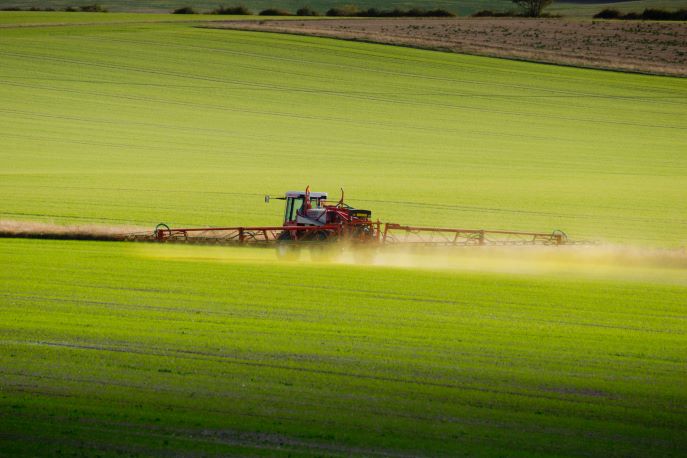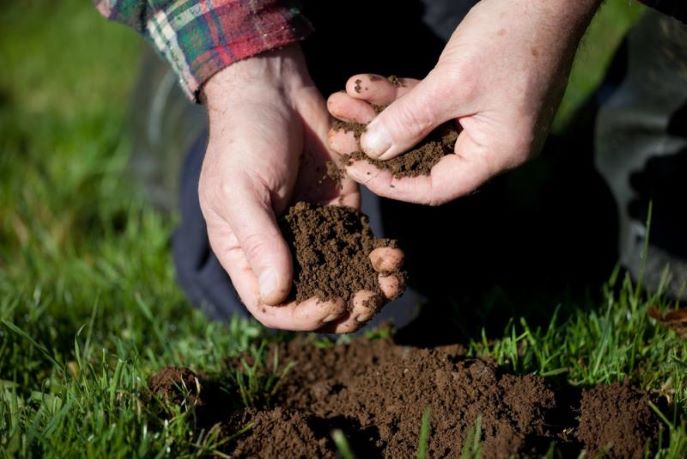Supportive policy has led food brands to pilot a plethora of regenerative agriculture pilot projects in Europe, but lack of common definitions and metrics are stymying ability to scale
The clock is ticking. By 2030 – just eight harvests away – the European Union aims to have made big inroads into cutting greenhouse gas emissions from agriculture, and be transforming today’s extractive and homogenous food system into a sustainable one.
Agriculture contributes some 10% of Europe’s greenhouse gas emissions but it could make a big contribution to capturing carbon and restoring biodiversity. It’s estimated that up to 70% of EU soils are unhealthy, and every year hundreds of millions of tonnes of soil are eroded, costing Europe’s farmers 1.25 billion euros each year. And that degradation is set to escalate as climate change intensifies.
Proposals on soil health – now out for public consultation – aim to make sustainable soil management “the new normal”. 2030 targets for the EU’s new Farm to Fork strategy include a 20% reduction in fertiliser use, a 50% reduction in the use of chemical pesticides and at least a 50% reduction in nutrient loss.
It's the goal that is important. You’re open to innovation, new technology, modern plant breeding
Public consultation has just concluded on a sustainable food system framework that aims to put sustainability at the heart of food policy and strengthen the resilience of food systems.
But how is the trend of accelerating soil erosion and diminishing soil health to be arrested, and could it even be reversed? The latest buzzword is “regenerative”, with many of the world’s largest food companies working with farmers on a basket of practices that were last widely used before the advent of industrialised agriculture, such as minimal tillage and keeping the land green with cover crops.
What’s different now is the use of technology to monitor what is happening in the soil and having the data to compare across terrains and crops.
Companies including McCain, PepsiCo and Cargill have made commitments to advancing regenerative agriculture on millions of acres of land producing staples such as potatoes, wheat and corn.

In August, Carlsberg announced a new agriculture focus that aims to have 30% of its raw materials grown using regenerative practices by 2030, growing to all of them by 2040.
And pilots abound – with Nestle, Diageo, Lidl, AB InBev and Danish-Swedish Dairy cooperative Arla (for example) all involved in projects that could deliver emissions reductions.
Unlike organic, regenerative agriculture is not prescriptive, says Thomas Elmqvist, a professor in natural resource management at the Stockholm Resilience Centre. “It's the goal that is important. You're open to innovation, new technology, modern plant breeding – all fine, as long as you apply a precautionary principle.” Enshrined in EU law, it essentially means better safe than sorry. “So it opens up much more space for innovation and experimentation, both for industry and farmers,” says Elmqvist.
Without a definition, we don’t know what we’re trying to get to scale
Elmqvist led on a recent project to advise EU policymakers. It identified “a number of these farming practices where you have quite impressive synergies that could enhance biodiversity and increase carbon capture, but you don't have to sacrifice agricultural productivity.”
Indeed, some of the pilots now under way with food companies are showing promising results without reductions in yield, and an analysis of 30 long-running farm experiments conducted by the UK’s Rothamsted Research suggests practices such as growing a more diverse range of crops and adding organic matter can reduce chemical fertiliser use, while still delivering high yields.
But having no hard and fast definition of regenerative agriculture potentially opens it up to “greenwashing”, suggests Kaley Hart, UK executive director at the Institute for European Environmental Policy (IEEP). “It can be more or less ambitious (and) without a definition, we don’t know what we’re trying to get to scale or what we’re trying to get policies to support.” Beyond a definition, the right indicators are essential to know if goals are being met, she adds. What the food industry requires “has to be sufficiently robust to really deliver improvements”.

Graeme Hamilton, director for sustainability, procurement, and circular ventures at AB InBev, suggests that while there’s “a real willingness to understand what are the technical practices a farmer can do on their land to sequester carbon, because (companies) are doing individual pilots, there isn’t yet consensus.”
Groupings such as the SAI Platform are working to get an industry-aligned approach, while one of its partners, the One Planet Business for Biodiversity coalition (OP2B) has agreed a framework for regenerative agriculture and converged on a series of impact indicators. Other companies, like retailer Lidl, are establishing their own metrics.
But regenerative practices have to work at the farm level, not only on individual crops, says Hamilton. OP2B director Stefania Avanzini agrees: “A farmer doesn't have one field for Nestle, one field for McCain.” She told a recent soils conference that without alignment on a framework, on indicators, ways of working and co-financing, “transition won't happen because the farmer cannot respond to the specific needs of each company”.
By having a focus on carbon, we can do a pretty good job of helping incentivise farmers
The group’s first project is in northern France, exploring crop rotations with 100 farmers on almost 40,000 acres. It is in the early phases, but six companies, including Nestle, McCain, Mondelez and L’Oréal, have made a long-term commitment to buy the wheat, potatoes and sugar beet grown.
AB InBev is discovering which regenerative practices work well for its malting barley. Alongside partners, it’s working with agronomy firm Soil Capital on a programme that pays for improvements in soil carbon. “By having a focus on carbon, we can do a pretty good job of helping incentivise farmers to adopt farming practices that improve soil health,” says Andrew Voysey, head of impact and carbon at Soil Capital. These ultimately build resilience to both drought and flood.
The scheme has just delivered nearly 1 million euros to the first cohort of 100 farmers in France and Belgium for (independently) verified soil carbon improvements, enabling the food and drink companies providing the revenue to demonstrate reductions in carbon emissions in their supply chain.

But an agricultural transition won’t happen overnight. In Soil Capital’s experience it could take between five and eight years, depending on how heavily farmers have relied on chemical inputs. To reflect that, the scheme works over an initial five-year period. It’s also knowledge-intensive, says Voysey. And herein lies the value of the data farmers generate – individual assessments, simulation and benchmarking allow farmers to learn from each other.
Sharing knowledge and financial risk is going to be key in making the transition, says James Ede, sustainability lead for Cargill’s starches, sweeteners and texturisers business, which has also teamed up with Soil Capital. Ede suggests one option would be to encourage farmers to bring different crops into rotation by agreeing to purchase that crop or help them find market access through its partners, thereby diversifying benefits. And sequestering carbon may only be the first service Cargill might purchase – water and biodiversity could follow.
Millions of farmers will have to be convinced to change behaviours. “That's where this advice, and knowledge-sharing and piloting is so critical,” says Hart. “And corporations can drive this agenda by requiring their suppliers to produce in certain ways.”
We need to ensure that policy is done in a smart way to work alongside private capital
Voysey at Soil Capital agrees. “The role of the food and beverage supply chain is to start very clearly, smartly, in commercial terms, signalling to farmers that reducing their carbon footprint to the point where they're not only net zero, but better than that, is going to be valued,” he argues. A final piece of the jigsaw is subsidy. “We need to ensure that policy is done in a smart way to work alongside private capital, or private markets” so that “we get more impacts from engaging multiple incentive streams rather than having them compete against each other.”
As part of the Green Deal to reduce greenhouse gas emissions by at least 55% by 2030, the EU wants to scale up so-called carbon farming. It’s expected to publish a regulatory framework for certification of carbon removals so that by 2030 carbon farming practices (such as regenerative agriculture) add 42 million tonnes of carbon dioxide to Europe’s natural carbon sinks.
And while companies like Soil Capital will have detailed data for the farmers they work with, such granularity will need to be scaled across the EU.
An economic research note from experts at Rabobank raises the question of how the framework will interact with the voluntary standards being set by companies and NGOs. They also caution that a robust mechanism will be needed to account for carbon release caused by natural disasters or new land management decisions, for example.

The Science based Targets initiative is also developing new guidance (in conjunction with the big multinationals like Nestle, Danone, Ab InBev and Cargill) that will detail how they account for land-based carbon removals.
The Farm to Fork strategy encapsulates a broad range of policy levers aimed at addressing the whole food system. It also includes sustainability labelling of food products. But it’s not yet clear what the requirements on food companies will be.
The EU’s Farm to Fork and biodiversity strategies themselves are moving towards a more holistic approach to both food production and consumption chains, “but the policy implementation and financial incentives are still a bit fragmented,” suggests Elmqvist. “You have some (incentives) in the Common Agriculture Policy (CAP), some in carbon farming and some in ecological restoration.”
For biodiversity, you have to take a landscape-scale approach
A reformed CAP, due to take effect from next year, is the main funding vehicle to enable farmers to deliver on the EU’s soil health agenda, but member-states will set their own priorities.
But it’s not enough to have policy support only at the farm scale, says Elmqvist. “For biodiversity, you have to take a landscape-scale approach.
It's really time that we put the landscape scale on the table, and try to think of how can we develop policy and financial incentives for farmers or landowners to start collaborating.”
In the meantime, industry pushes on with pilots. “What we can't do is wait for a policy and do nothing,” says Hamilton.
Angeli Mehta is a former BBC current affairs producer, with a research PhD. She now writes about science, and has a particular interest in the environment and sustainability. @AngeliMehta.
This article is part of our in-depth Autumn 2022 Regenerative Agriculture briefing. See also:
Nature-depleted UK sets sights on greener food system post-Brexit
The pioneers trying to restore life to America’s stressed soils
From hemp to Kernza, the hunt for more resilient food crops
Winemakers turn to sustainability to ride the climate storms
Beef and dairy farms pushed to innovate to tackle methane emissions
Turning cows from climate criminals to heroes with agroforestry
Millions of smallholder famers key to fighting growing desertification in Africa
Should we be betting the farm on biochar?
Can sustainable soya farming come fast enough to save the Cerrado?
Comment: Here’s how the EU’s new rules could finally turn the tide on tropical forest loss


